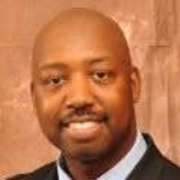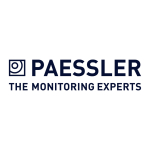What is our primary use case?
We use Auvik for monitoring networks across all of our sites for alerts, reporting, configuration backups, and troubleshooting. Auvik does a little bit of everything when it comes to networking.
I'm not the only person that utilizes Auvik, but I'm the only network engineer. The infrastructure team uses it for server monitoring. Security guys can also access it, but I'm the primary caretaker.
I monitor 34 sites with 200 managed devices, and about another hundred are unmanaged. Altogether, I have over 2,600 devices that are not networked. If you subtract the network from that, it's about 2,300 devices that aren't network devices, including printers, servers, and computers. Auvik crawls and finds those kinds of things on the network. That's what I mean by total picture.
How has it helped my organization?
I previously used SolarWinds, which I call a Swiss Army knife of network monitoring systems. SolarWinds is great. It does many things, but it's gotten too bloated and slow. It's not as intuitive as Auvik. SolarWinds didn't do mapping on its own, and the mapping provided was kind of clunky to get running because you have to manage the licensing and everything. Even after tweaking SolarWinds, I couldn't get the mapping capabilities Auvik gives me.
Also, SolarWinds wasn't a one-stop shop. Auvik is the closest I've gotten to a single pane of glass. It's hard to judge whether Auvik has saved time over SolarWinds after two months because I'm still doing some slight tweaks. It took me months to get SolarWinds the way we need it here. Auvik is still a pretty new product for us. Though it's meeting our basic needs, I'm the kind of guy who likes to squeeze every bit of juice out of my fruit.
The out-of-the-box alerts were pretty on-point, so I've only had to create two alerts on my own. The reporting is easy to access, so pulling reports is more straightforward. That saves time.
Also, I don't need to add devices to Auvik. It automatically crawls, finds them, and puts them in the inventory. I don't have to go back and draw maps. Auvik does that. Mapping in SolarWinds requires their map tool, a separate product you must install on the server itself. Drawing maps on that was painful. Discovery isn't something I need to do anymore. When I added five new devices to a site, it found them all and brought them into inventory. I didn't have to do that.
Auvik automatically keeps the device inventories updated. I'm shutting down SolarWinds this week. On Friday, I did my final inventory comparing SolarWinds and Auvik. I have not been updating SolarWinds, and Auvik has about 20 more devices on the network side alone because I don't have to go back through and update the inventory. It'll pull it in itself. When something is added, I get an alert saying the new device has been added to the network.
Auvik has sped up my resolution time because you can drill down in Auvik and look at the net flow information faster. The alerts also help, but if this is a data-driven event, I need to look at the net flow, which is much quicker.
What is most valuable?
The monitoring and alerts are easy to use and set up. Discovery is the first step in monitoring, and that's a piece of cake with Auvik. It'll scan your networks once you get the credentials set up and automatically find newly added equipment as long as the same credentials are already on that gear. Auvik makes my job a lot easier. I don't have to keep going back to a monitoring system to add devices each time we bring something new. That part alone saves me time.
It's all intuitive and straightforward. The out-of-the-box alerts provided everything I needed, but I've made a couple of additional alerts. You can schedule maintenance windows in Auvik, and the solution won't send any alerts during that time. With other products, you have to turn off the alerts on each device if you don't set it up correctly. Ease of use is crucial because I'm the only network engineer at a company of 900, so I have many things to do.
I have a single pane of glass. It's easier to go into one system where everything is easy to find. It's a one-stop-shop with everything you need instead of going into multiple products to get it done. I don't consider Auvik entirely cloud-based because you have collectors onsite. The portal for viewing your infrastructure is cloud-based. You don't need to get into a VPN or anything like that to get to it. It's two-factor authentication, so it's a little harder for bad actors to get to your data.
The ability to log in and run commands from the cloud is helpful. You can access a full command line on the device, so I don't need to VPN into the infrastructure, which helps when troubleshooting. It's also beneficial that it's not on-prem. If my leading site, where the on-prem solution is located, goes down, no place is being monitored. As long as the internet connection is up and the collector is running, all my sites are being monitored.
What needs improvement?
The mapping automatically finds all the interfaces but tags some of them incorrectly. For instance, if it can't find how a CPU interface is connected, it will use the MAC address last seen on the router and sometimes attribute cloud-connected devices to the route, but it's not actually there. That's not a true connection.
It isn't going to the cloud. It's going directly back to the router. I've talked to Auvik support about that already. They're looking into it. Overall, mapping could be a little better. Though they do a great job, there's still room for improvement. It's 100% accurate for some sites but only 90% for others. It gives you a complete view of how things are connected for the most part. Auvik still struggles with wireless bridges and things of that nature. However, Auvik isn't the only product missing that, and there is a simple way to make those connections myself.
For how long have I used the solution?
I did a couple of trials with Auvik, but we've officially been using the solution for about three months now.
What do I think about the stability of the solution?
I'm through my testing phase, and now that I'm in my third month using Auvik, I can say it's pretty stable. I had one issue with Syslog, but they fixed it. They made a change that caused an unforeseen issue in Syslog. They resolved the problem in the next release.
What do I think about the scalability of the solution?
Auvik's scalability is pretty good. I'm monitoring 30-plus sites. I was running 30 of them off one collector, so the scalability is pretty good.
How are customer service and support?
I rate Auvik support nine out of 10.
How would you rate customer service and support?
Which solution did I use previously and why did I switch?
SolarWinds does many of the same things, but Auvik has a different approach. If we have some networking event, we can find the problem machine in Auvik and see what it has been talking to a lot faster.
Auvik is a little more agile. We can find things a little faster with Auvik than in SolarWinds. We don't need to dig as much. The graphical nature of the product makes it easier to navigate.
How was the initial setup?
Deploying Auvik is very straightforward. I implemented it pretty much out of the box. When I had my customer success meetings with Auvik support, I had already done everything they told me to do. I'm experienced in setting up things, so I had it up and running by the time we met to review our technical onboarding.
I can onboard a small site in 10 minutes. Once you input credentials at the top level, it's only a matter of putting in subnets that you want scanned, waiting for them to be scanned, and verifying everything is there. It's about 10 minutes per site once your credentials are squared away.
Once that is ready, it takes Auvik an hour or so per site to stitch everything together. Much of it is on the backend because it makes all those maps and everything like that, which takes time. It has to pull in the data from SNMP and CDP. It looks at all the interfaces and stitches together maps, so it depends on how many collectors you have. It takes longer if you're running a couple of collectors for an entire enterprise because a few collectors are doing a lot of work.
It's much faster if you have a collector at every site. It's probably 15 to 20 minutes per site. I only used one collector when I started because I wanted to see how hard I could push it. It took much less time to set up than SolarWinds. The discovery is pretty simple for what you have to do from my end. As long as you have your credentials at the top level, you add a new site, throw in your subnets, and it finds them for you.
Auvik doesn't require any maintenance after deployment. I wanted to stress test the collector to see what might break it. I had 30 sites on one collector at one time, but I decided to go back to the suggested implementation.
With a single collector on 30-plus sites, the daily tasks were completed, and we weren't close to using up the CPU or memory on this device—this wasn't a beefy server. It was built to their specs but not overly powerful. Once your collector runs, you don't need to do much with this product because the brains are in the cloud. If your collector goes down, bringing up a new one is a piece of cake.
What was our ROI?
It's apparent off the bat how much time I'm saving by doing tasks because of the ease of use. Once I got everything discovered, it was evident that I would save time by automatically drawing maps and keeping them updated. I immediately noticed that I would save time, and time is money. I always have several projects and no longer worry about my inventory because Auvik does this for me.
Once the devices are configured, and the collectors are installed, I don't need to add anything to the monitoring system or make sure the backups are there. Auvik grabs it for me.
What's my experience with pricing, setup cost, and licensing?
It's worth the price, depending on how you use the product. Price is a significant component of any purchase; for me, it all goes back to visibility. I have more visibility into everything now than I had before. SolarWinds was on every node, and every interface had to be licensed. With Auvik, the cost could be the same or more depending on the level of visibility you want. The price and value vary according to your network infrastructure and the information you want.
If you want a complete picture of your entire network, then Auvik is a better choice. SolarWinds is a better option if you're only looking at network devices. I think Auvik's price per node is a tad high. That's probably my only knock against Auvik. Your network nodes are billable, including servers, printers, or other devices. You have visibility into those things as well. In other products, each one of those devices is a billable node, so Auvik gives us a little bit more visibility than we had before because now we have more devices in the system.
Which other solutions did I evaluate?
We looked at Entuity and Datadog.
What other advice do I have?
I rate Auvik nine out of 10. I deduct a point for the mapping and reporting. I like everything else that Auvik does. The only aspect I don't like 100% is the mapping. Also, they have canned reports instead of a built-in report builder. You have to extract the data in Power BI or some other way. They have great pieces, but I can't customize them and create my own within their system.
Disclosure: PeerSpot contacted the reviewer to collect the review and to validate authenticity. The reviewer was referred by the vendor, but the review is not subject to editing or approval by the vendor.





















